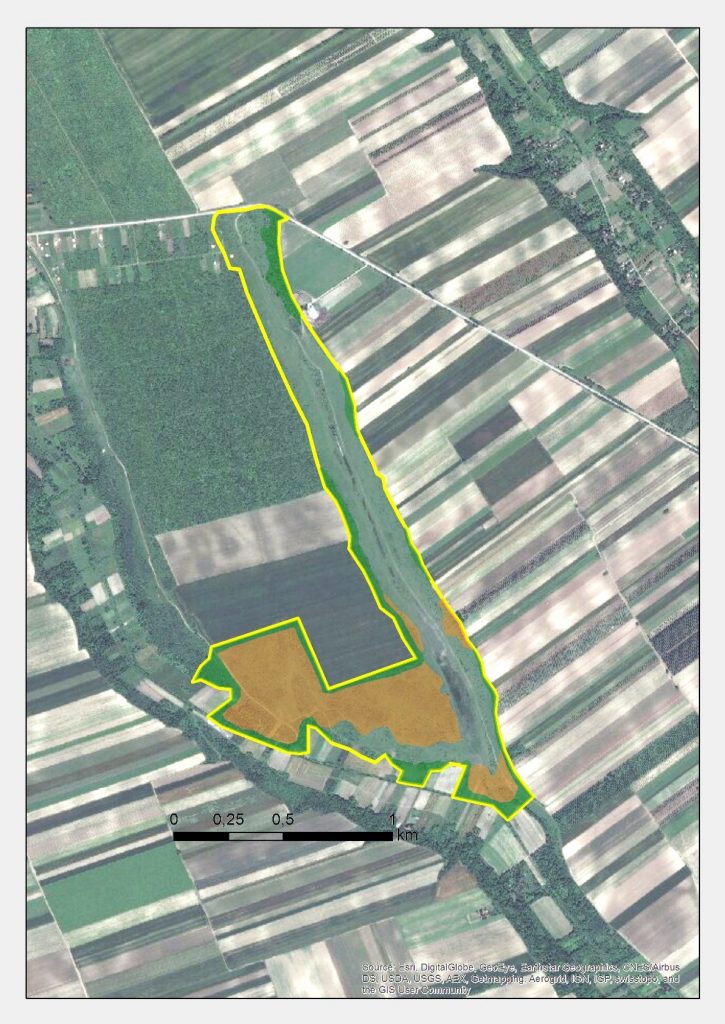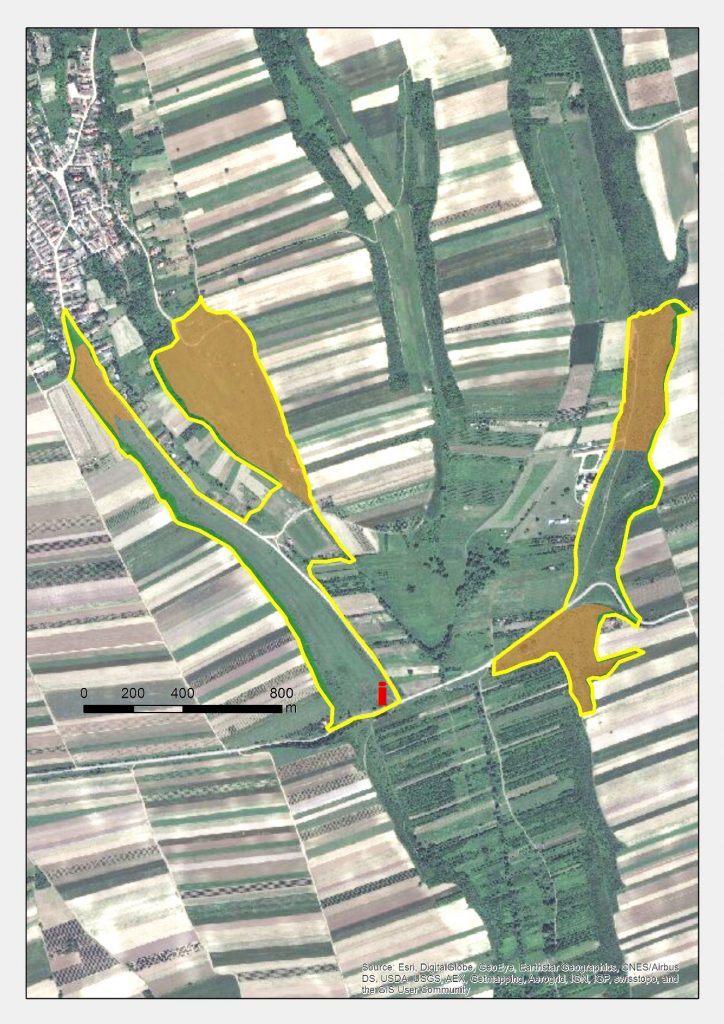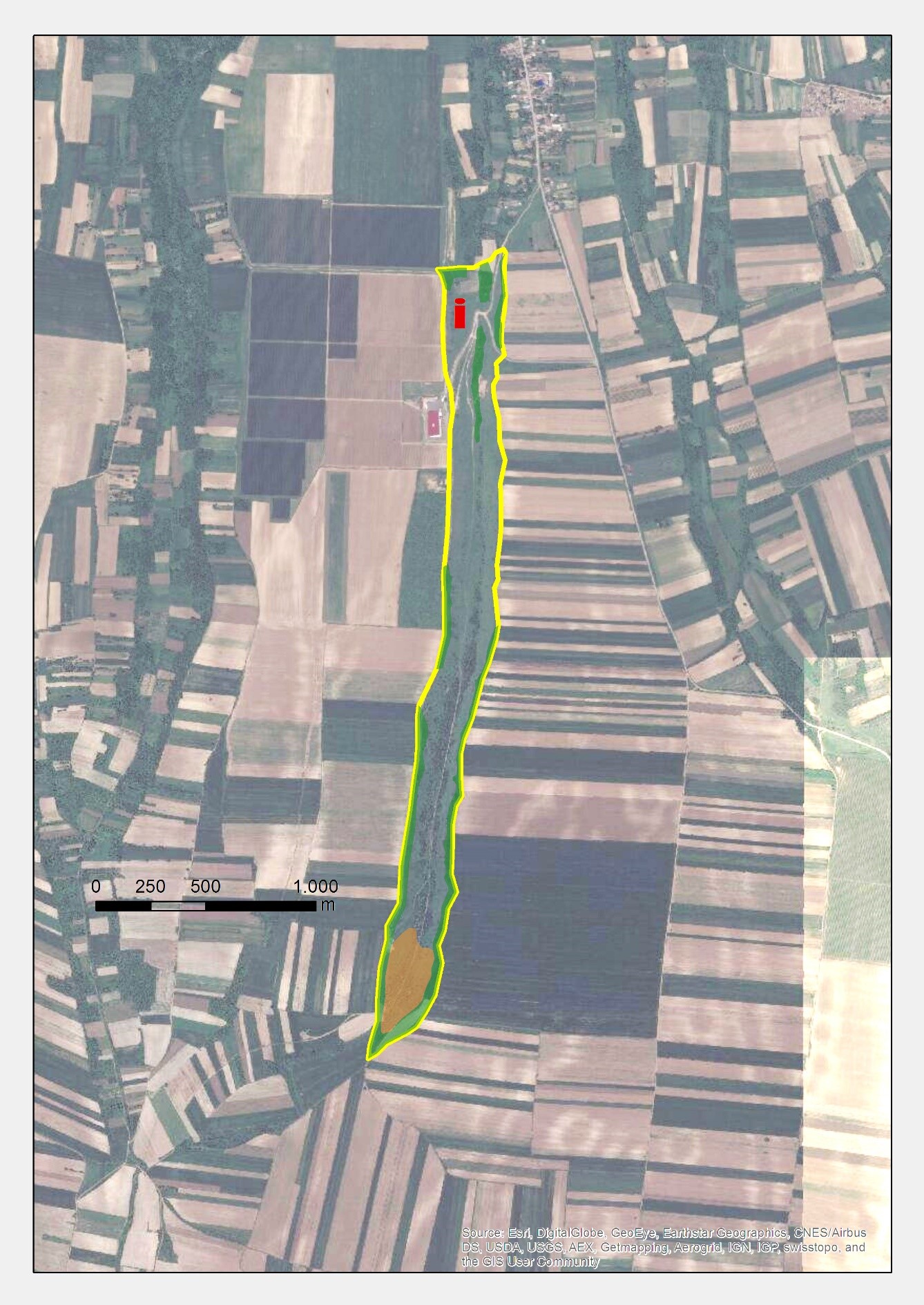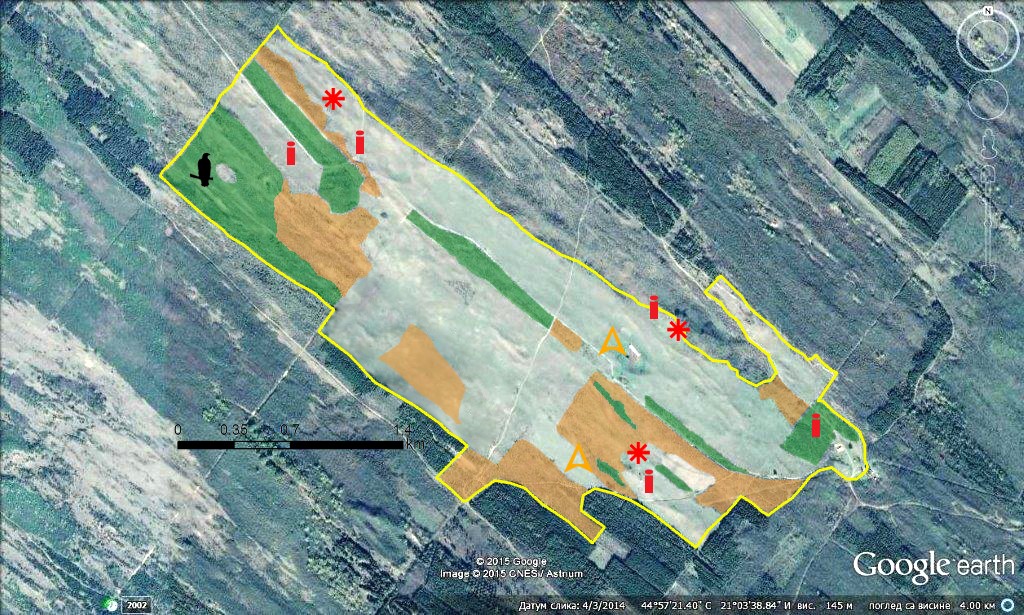Institution/Author: Provincial Institute for Nature Conservation, Novi Sad/Nikola Stojnić
Steppe habitats on Fruška gora mountain slopes were deteriorated until 2015 outside the borders of protected area due to partial abandoning of pasturing and resulting overgrowing of invasive bush, mainly hawthorn (Crataegus monogyna). Through activities financed by Provincial Secretariat in charge of Nature Conservation, revitalisation was applied through removal of hawthorn. It was conducted on the sites of Neradinski do (24 ha), Krušedolski pašnjak (31ha) and Remetski do (40 ha). These localities are important as habitats of animals such as European Souslik (Spermophillus citellus), Imperial Eagle (Aquila heliaca) and plants such as Pheasant’s Eye (Adonis vernalis), Sternbergia colchiciflora. A total of 95 ha were revitalised on Fruška gora in the period 2012-2015, with the subsequent grazing for maintenance purposes. By virtue of the Law on National Parks in Serbia, borders of the National Park Fruška gora have been enlarged to include these areas. Steppe habitats in the Special Nature Reserve Deliblato Sands were deteriorated due to complete abandoning of pasturing and therefore overgrowing of invasive bush, mainly hawthorn (Crataegus monogyna). Through activities financed by Provincial Secretariat in charge of Nature Conservation, revitalisation was applied through removal of hawthorn. It was conducted on the locality Korn in the period 2002-2015 on 150 ha with new establishment of grazing areas for sheep and cattle for maintenance purposes. This locality is important as a habitat of animals, such as European Souslik (Spermophillus citellus), European Mole Rat (Nannonspalax leucodon) and plants such as Paeonia tenuifolia and Crocus variegatus.
 |  |
 |

Maps legend:
Yellow line: border of protected locality
Unmarked zone: area where revitalisation activities took place
Orange area: Localities/area for further revitalisation
Green area: Localities/area which are not planned for revitalisation